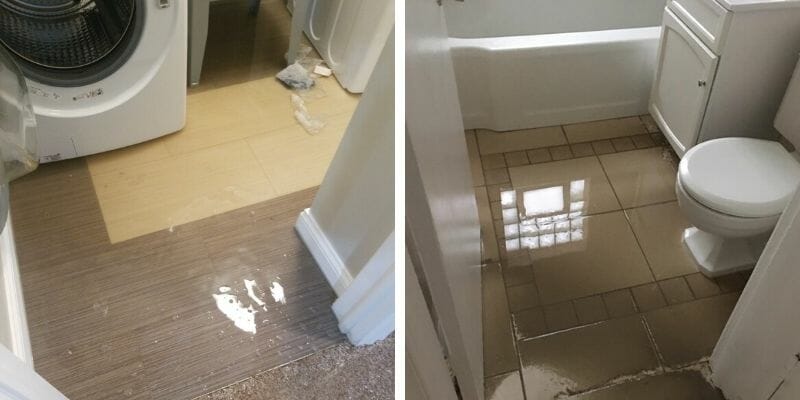Each person is bound to have their own concepts when it comes to How to Repair and Prevent Bathroom Water Damage?.

Water damage commonly happens in the shower room because of the water utilized day-to-day. Sometimes, the damage could be a little mold and mildew from the shower. Other times, it's enormous damages on your floor. Whatever it is, it is constantly excellent to understand the reason and also prevent it before it occurs.
This overview will undergo a few of the usual causes of water damage in the restroom. We will certainly additionally examine what you can do to prevent these causes from harming your washroom. Let's dive in.
These are the common reasons you would certainly have water damage in your washrooms as well as exactly how you can detect them:
Excess Moisture
It's awesome to have that long shower as well as dash water while you hem and haw and act like you're performing, however often these acts might create water damage to your washroom.
Splashing water around can cause water to go to corners and develop molds. Enjoy exactly how you spread out excess dampness around, and also when you do it, clean it up to stop damages.
Splits in your wall surface floor tiles
Washroom wall surface tiles have been specially designed for that purpose. They protect the wall from moisture from people taking showers. Nonetheless, they are not indestructible.
Sometimes, your washroom wall ceramic tiles fracture as well as enable some wetness to leak into the wall. This might potentially ruin the wall if you don't take any action. If you discover a crack on your wall tiles, fix it immediately. Don't wait until it destroys your wall surface.
Overruning commodes and also sinks
As people, often we make errors that might trigger some water damage in the restroom. For example, leaving your sink tap on can create overruning as well as damage to other parts of the washroom with dampness.
Likewise, a defective bathroom could cause overruning. As an example, a damaged toilet handle or various other parts of the tank. When this occurs, it could damage the flooring.
As quickly as you discover an overflowing sink or toilet, call a plumbing professional to aid take care of it right away.
Burst or Dripping Pipelines
There are numerous pipelines bring water to different parts of your washroom. Some pipes take water to the commode, the sink, the faucets, the shower, and several other places. They crisscross the little area of the washroom.
Every so often, these pipes can get corroded as well as ruptured. Other times, human activity can create them to leak. When this takes place, you'll find water in the corners of your bathroom or on the wall surface.
To identify this, watch out for bubbling wall surfaces, molds, or mold. Call a professional emergency situation plumbing to repair this when it happens.
Roof covering Leaks
Occasionally, the problem of water damage to the washroom might not originate from the bathroom. As an example, a roof leakage could trigger damages to the restroom ceiling. You can detect the damage done by checking out the water stains on the ceiling.
If you discover water discolorations on your ceiling, check the roofing to see if it's harmed. Then, call a professional to assist address the problem.
Verdict
Water damage to your bathroom can be aggravating. Nevertheless, you can manage it if you avoid a few of the causes discussed in this overview. Call a professional emergency plumbing professional if you notice any type of extreme damage.
How to Prevent Water Damage in Your Bathroom?
Water damage repair is an expensive, meticulous, and lengthy process. Unfortunately, bathrooms are the most susceptible rooms to water damage due to toilets, showers, and sinks. Pipes and fixtures wear out over time and are not immune to damage. But all is not lost, as there are ways to prevent water damage from occurring in your bathroom.
Check Your Plumbing
Nothing lasts forever, especially pipes, which can rust and begin leaking over time. You should periodically conduct pipe inspections and pay attention for any musty smells or water stains that may indicate you need water damage repair. Here are some things to check:
Frequently test valves for your toilet, shower, and sink to ensure they are properly working. Check faucet supply lines hidden under vanities and replace when needed. Replace cracked or deteriorating caulking along sinks, tubs, and showers. If you notice a clog in your sink, call in a professional. Since you can’t check the pipes in the wall, keep an eye out for stains, drywall bubbling, musty smells, and excess moisture; if the bathroom is on a second level, check the ceiling of the room directly below for these signs. Don’t Overwork Your Toilet
One of the most common reasons bathrooms need water damage repair is due to overflowing toilets. Save yourself the hassle of cleanup by being mindful and not pushing your toilet to extreme limits. If you have young children, it is especially important to keep an eye on them when they are in the bathroom and to teach them how to avoid clogging the toilet. Here are some more tips to help prevent your toilet from overflowing:
If you have a septic tank, only use septic-safe toilet paper Do not flush anything down the toilet besides toilet paper; items like diapers and sanitary napkins will clog the piping Pay attention to your toilet’s water level: If it’s low, it could mean it is partially clogged or that there is a crack in the toilet bowl https://www.alure.com/home-improvements-blog/resources/how-to-prevent-water-damage-in-your-bathroom

I was guided to that write-up on How to Repair and Prevent Bathroom Water Damage? from someone on a different website. Are you aware of somebody who is inquisitive about the niche? Feel free to promote it. Thanks for going through it.
Source